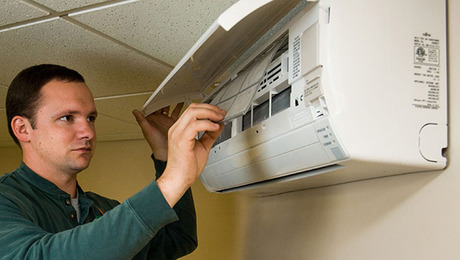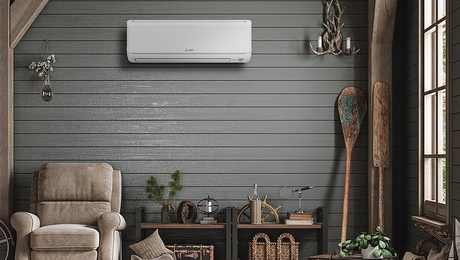Q:
When I built my home four years ago, the HVAC contractor substantially oversized the system. From May to October, the air conditioner runs only five minutes to ten minutes an hour to maintain a temperature of 70°F. But as a result, the humidity in my home is generally 75% to 85%, leaving the sheets cold and clammy, and everything in the house smelling musty. A whole-house dehumidifier is beyond my means, as is replacing the air conditioner with a correctly sized unit. Is there any other effective, affordable way to dehumidify my house?
Ed Christian, Hamburg, PA
A:
Russ Bertrand, president of Bertrand’s Refrigeration in Wakefield, Rhode Island, replies: Oversizing is a common error for an HVAC contractor to make, especially when attempting to anticipate maximum loads that might be encountered. And many contractors blatantly oversize systems to satisfy room temperature without considering relative humidity.
Oversize systems pull the temperature down more quickly, and the quicker the temperature drops, the less moisture is removed from the air. And I am sure you have heard high humidity not only makes things smell musty but also makes the cooled air feel a lot less comfortable. Water has to be removed from the space and the objects in the house to reduce relative humidity, and that can only happen if the system runs for a longer period of time.
With the information you have presented, I’d still recommend replacing your air-conditioning unit with one sized appropriately for your house. But short of that option, I have three less expensive ideas that would work.
The first suggestion is to install a reheat coil in the air-conditioning duct that uses domestic hot water to raise the air temperature, which in turn makes the air-conditioning unit run longer and lowers the relative humidity in the house. Used often in commercial work, reheat coils are inexpensive to install but costly to run.
If the high relative humidity in the house is being created by internal sources such as cooking, nonvented or poorly vented bathrooms, hot tubs, an indoor pool or a nonvented clothes dryer, an air exchanger could be installed. In this system, fresh outside air with lower relative humidity is run through the air exchanger and into the home while inside air with higher relative humidity is exhausted to the outside. But an air exchanger would work only if the relative humidity outside were less than the relative humidity inside. Also, because it is only 70% to 80% efficient, an air exchanger would also put an added burden on the airconditioning unit.
A third option would be installing a device called the APR Control (Rawal Devices Inc.; 800-727-6447; www.rawal.com) in the condensing unit of the air conditioner. Rawal’s Web site has a detailed description of how its APR Control unit works, but basically, it monitors the temperature of the return air and actually changes the system’s cooling capacity in response. With the APR Control installed, the air-conditioning unit runs longer for each cycle, but it runs more efficiently. And the evaporator is kept in a dehumidifying mode the whole time, dropping the relative humidity inside the house. You’ll have to check with your local HVAC contractor for the exact cost of installing the APR Control in your house’s system, but I’m sure it costs much less than replacing the entire air-conditioning unit in the house.

























View Comments
While buying the air conditioner for your home, it is really important to look for the factors like its type, its size, the percentage of energy efficiency and many more. By going ahead this way, one can avoid humidity and can live in a comfortable environment. More details about it can be found on https://allweekairconditioning.com/